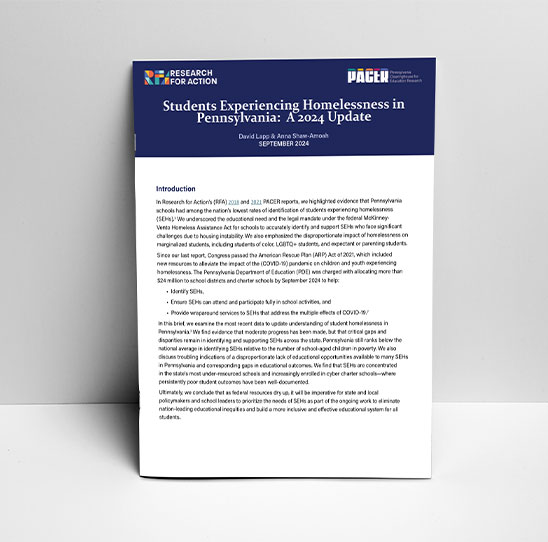PERC research is produced through collaboration between researchers from Research for Action and the School District of Philadelphia’s Office of Research and Evaluation. For more information, please visit phledresearch.org.
Students who successfully transition to ninth grade are more likely to graduate from high school. In 2018, the School District of Philadelphia (SDP) developed an indicator for being “on track” at the end of a high school student’s freshman year. As part of the district’s overall strategy for improving graduation rates, school administrators currently use the Ninth Grade On-Track indicator as an early marker of progress towards graduation and to identify students in need of intervention.
Using four cohorts of SDP data prior to its development and implementation, PERC found that one-third of first time freshman in 2013-2017 would have been flagged by On-Track indicator as “off-track” after their first year of high school.1 Although the On-Track indicator was not yet in place, the reports serve as a benchmark against which progress can be measured.
Building upon this prior work, this report examines two of those same cohorts of off-track freshman in the expected graduating classes of 2017 and 2018, following them over time to understand which students were able to graduate and when they got back on track. Similar to our prior work, these findings describe student experiences that pre-date the establishment of SDP’s On-Track indicator. Thus, this report serves as baseline for the district to assess progress toward efforts to improve graduation rates through schools’ use of the On-Track indicator to identify and connect students to supports.
We also assess graduation rates for students at varying degrees of being off-track and for subgroups of students and schools to examine compounding risk factors for off-track students. We examine graduation rates for students at varying degress of being off-track, i.e., what it means to be securely or marginally on track versus marginally, moderately, or very off-track at the end of 9th grade. The subgroup analyses draw attention to disparities in recovery from 9th grade off-track status and include student subgroups defined by gender, race/ethnicity, low-income status, 9th grade special education status and English Learner status, and 9th grade attendence and suspensions. We also examine the graduation rates for off-track students separately for those attending schools with small and larger enrollments and across school admission types.
Finally, we examine when students get back on track and graduation rates of students who leverage credit recovery to get back on track. These findings apply to subsamples of students for whom data can support the analyses, thus are exploratory and require additional research to understand more fully.
The goal of examining these patterns is to understand which off-track students and which schools might need the most support. This report offers a first-time look at graduation rates for off-track students in SDP. We anticipate the findings will be informative to school and district administrators working to support high school students who fall off-track in ninth grade. These findings raise questions about whether some students and schools may benefit from more resources and/or different systems or approaches than others. The findings also point to the need for more research to examine why some students in some schools recover at higher rates than others and build evidence for effective interventions for getting students back on track.









